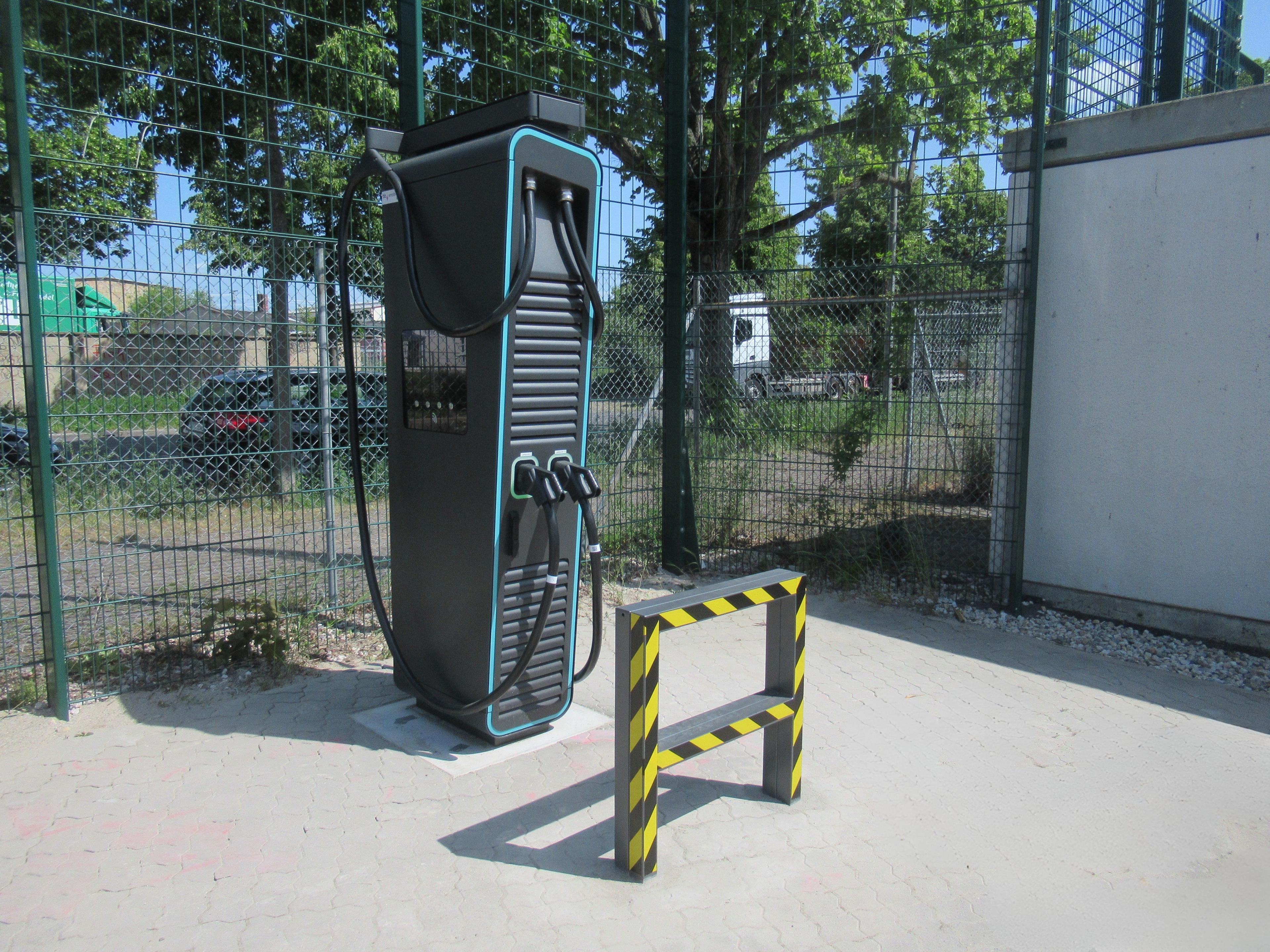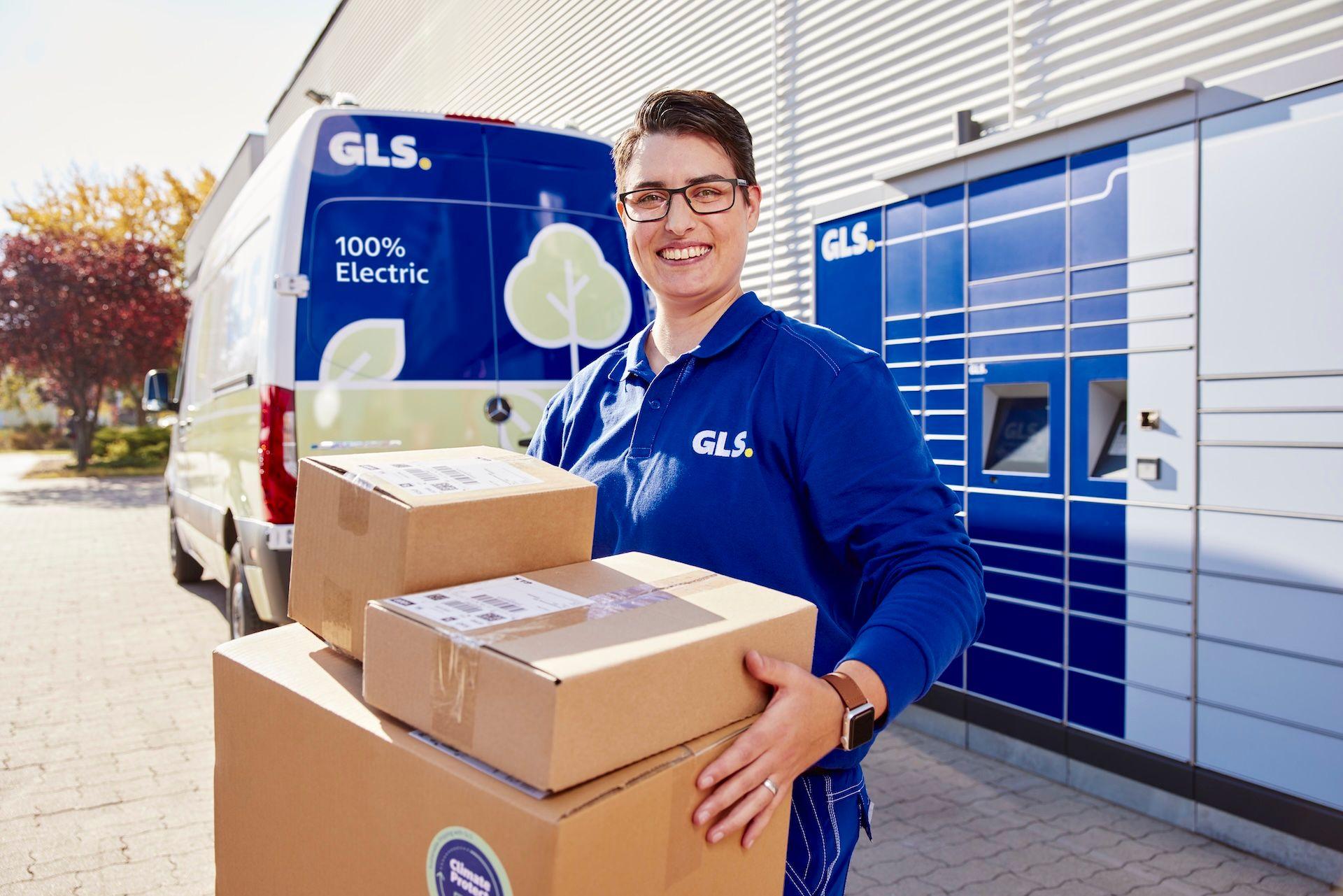With over 1,400 (partially) electric courier vehicles, GLS is already ensuring low-emission parcel delivery in many cities. In addition, more and more locations are being equipped with charging infrastructure with the help of our flexible charging solution.
Strong expansion of e-mobility
The parcel and logistics service provider GLS is expanding the electrification of its vehicle fleet. More than 1,400 zero- and low-emission delivery vehicles are now in use every day in over 300 German cities – and further expansion is ongoing. By the end of 2030, 75 percent of all last-mile delivery vehicles are planned to be converted to zero- and low-emission drives.
In addition to investing in the “last mile”, the final route of a parcel to the customer, GLS is also working on sustainable concepts for long-distance transport: a first electric truck and a hydrogen truck have been part of the fleet since 2024. With the addition of the e-truck in spring 2025 and over 40 other trucks with alternative drive systems (HVO100, bio-LNG), GLS is gradually expanding its sustainable long-distance truck fleet.
Sustainable growth requires flexibility and a needs-based expansion of the charging solution
In order to operate the constantly growing electric fleet, GLS requires an appropriate charging infrastructure that grows simultaneously with the ever-expanding e-vehicle fleet.
However, expensive power extensions to the grid connection or the costly installation of additional transformers should be avoided. Individual requirements and conditions must be taken into account for each location so that the charging infrastructure can be expanded quickly and easily.
In addition, GLS already has around one thousand additional charging points in operation across Germany, which need to be integrated into the new charging infrastructure in the interests of sustainability.
The most important criticism of e-mobility in logistics is that vehicle charging must function reliably to ensure that operations run smoothly. Thus, a trusting and close partnership with the solution provider is essential. From day one, there has been an open and honest exchange between GLS and The Mobility House Solutions in order to enable a tailor-made, flexible and functioning charging solution for the logistics provider.
And even during ongoing operations, we enable GLS to keep their business running: The Mobility House Solutions not only carries out the annual inspection for the logistics company (such as DGUV V3), but also ensures the fastest possible on-site troubleshooting in the event of a problem. After all, technical problems at the charging points cannot be completely avoided – which makes it all the more important to provide an efficient service that immediately rectifies any problems that might occur.
Central system offers control over all charging points
Since the start of the project in 2019, we have implemented a customized solution for ten GLS locations so far. Between ten and 31 new AC charging stations have been installed at each location. In addition, 10 DC charging stations for fast charging are available across three locations.

It is especially convenient for the GLS fleet managers that they can view and manage all parameters of all charging points at all locations, as well as all user data in a central system. In the future, the separate billing of charging power from subcontractors and partners will also be an important function for the logistics company.
This can be done easily by assigning roles in the ChargePilot® dashboard and issuing corresponding RFID cards or chips. If necessary, individual charging processes can also be prioritized, for example if a courier vehicle needs to be fully charged and ready for use again as quickly as possible.
It is also possible to integrate generators such as a PV system for surplus charging. ChargePilot® exchanges all the information required for communication with other systems via open interfaces to energy management, fleet management and billing systems. As ChargePilot® is designed to be manufacturer-neutral, charging stations from different manufacturers can also be integrated. Thanks to flexible electricity tariffs and bidirectional charging, GLS has high savings potential in the operation of its e-fleet.
Powerful charging infrastructure for the electric parcel service
Our smart charging and energy management system ChargePilot® regulates the operation of the charging infrastructure, which currently has 213 charging points across ten locations. This enables us to ensure that the many GLS charging processes are integrated into the existing energy system at each location as efficiently and cost-effectively as possible.
ChargePilot® takes over the monitoring and dynamic load management of the charging points. Depending on the availability of electricity at the grid connection, the e-vehicles charge particularly quickly or – as soon as large consumers such as the sorting facilities start up – at a slightly slower rate or staggered over a short period of time.
A crucial point for GLS is that, thanks to our flexibly scalable and manufacturer-neutral technology, the infrastructure can not only integrate existing assets (which were already available to a not inconsiderable extent), but can also be gradually expanded in line with demand. For future scaling, empty conduits were therefore already laid during the basic installation, for example, so that further charging points can be added quickly and easily in future expansion stages.
